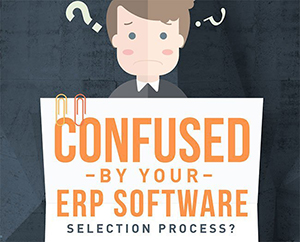How to achieve the perfect balance between inventory and sales
This post explains how SAP Business One helps retail and wholesale distribution companies drive sales and balance inventory levels to run a successful business.
The tension between sales and inventory management is well understood.
If customers can’t get what they want (when they want it), it means missed revenue and less repeat business. But holding too much stock is equally risky. It ties up cash, increases storage and management costs, and if the stock can’t be sold at a profit you lose money.
It’s clear that you need more certainty around supply and demand.
An Enterprise Resource Planning (ERP) solution can improve visibility across your entire supply chain, enabling better communication and coordination between your sales and inventory management teams.
SAP Business One is a preferred ERP solution for businesses seeking to strike the perfect balance between inventory management and sales management.
Anticipating and influencing customer demand is essential for business success
Consumer demand isn’t stagnant. It varies depending on economic conditions, the time of year, and trends that shape people’s expectations and perceived need.
When you don’t have a sense of control over the amount of inventory you have on hand, what it’s costing you, and your rate of turnover—it’s easy to get into a stockpiling mindset.
What happens when trends change, or deflation puts a pause on spending? If you haven’t managed stock levels well, the value of your inventory drops and you may be forced to discount heavily to liquidate excess or redundant goods.
That’s why influencing demand is a priority for businesses.
This is where your sales and marketing team step in: they research the market, collect and manage customer data, differentiate your brand, develop promotions, nurture relationships, negotiate and close sales, and engage with customers over the long-term to build loyalty.
Keeping your marketing promises, and boosting your team’s confidence to commit to new customers and give them a positive experience, relies on the availability and flow of stock.
Ideally, your sales and inventory teams should have a symbiotic relationship. That’s not possible if they’re not making decisions based on the same data.
The beauty of SAP Business One is that it’s a comprehensive ERP solution: putting your finance, procurement, production, sales, customer service, and warehouse teams on the same page, with no vital information hidden in separate systems or spreadsheets.
[FEATURE ARTICLE – Using SAP Business One as a platform to digitise your business]
A unified approach allows for closer alignment between sales and stock levels
Working from one clever and centralised system ensures that information from different parts of the business can be combined and analysed to provide:
- Real-time data about stock levels, adjusted the moment a sale or stock movement is entered.
- Accurate recommendations about what and when to restock.
In addition, Material Requirements Planning (MRP) tools in SAP Business One help guide your decision-making for a chosen planning horizon based on parameters including:
Demand already in the system:
- Sales forecasts
- Sales orders that haven’t been supplied yet
- Production orders that will require goods issued to them
- Stock transfers yet to be dispatched
- Internal stock requests or customer allocations
- Quotes in the system (which have and haven’t been accepted)
- Yet to be drawn-down blanket agreements
Inventory and inbound supply:
- What you currently have in stock
- Purchase orders yet to be receipted
- Production orders yet to be completed
- Stock transfers yet to be receipted
This functionality makes it simpler to set minimum and maximum stock levels based on genuine insights, rather than best guesses. Importantly, the system doesn’t just look at the number of units but also considers how much warehouse space you have available, and other factors.
[FEATURE ARTICLE – 5 Key priorities when choosing inventory management software]
Remain highly responsive to current and new customers with SAP Business One
Proactive and predictive inventory management is one aspect of improving the balance between supply and demand. Another is empowering your sales team to meet customer expectations.
Accurate information about products and their availability is crucial. SAP Business One includes several features that make life easier for people managing frontline sales, such as:
- Available to Promise report: A sales team member can quickly bring up an overview of the status of any item in the system while they’re negotiating with a customer. So they can confidently discuss or answer questions about: how much is available, how much is on order, and when it will be available.
- Alternative items: It’s easy to create linkages within SAP Business One between different but similar products that you offer. That way, when an SKU is not available immediately, the salesperson can see alternatives that they can recommend at a glance, without having to call the customer back.
- Last price: Perhaps your business is flexible on final prices depending on volume or loyalty, or encourages competition within your sales team by enabling ad-hoc discounting within certain margins. Within SAP Business One a salesperson can quickly see how much a customer paid for an item previously, so they have a better starting point for negotiating.
What’s more, you can combine the power of SAP Business One with other solutions like SAP Sales Cloud for more nuanced customer relationship management (CRM) and mobile sales support—driven by data in your ERP.
Using SAP Sales Cloud you can give field marketing representatives instant access to information about top purchases for any customer, the ability to discount stock that’s about to expire or become redundant, and tools to negotiate and build quotes on the go.
The ideal balance between sales and inventory is within reach with SAP Business One
When your business success revolves around both having the right goods to sell and having the information needed to sell them effectively, you need greater continuity between inter-dependent data and workflows. SAP Business One brings everything into alignment to help you balance inventory and sales.
Interested in improved control and collaboration in how you manage inventory and sales? Contact an experienced SAP Business One consultant today.









Leave A Comment